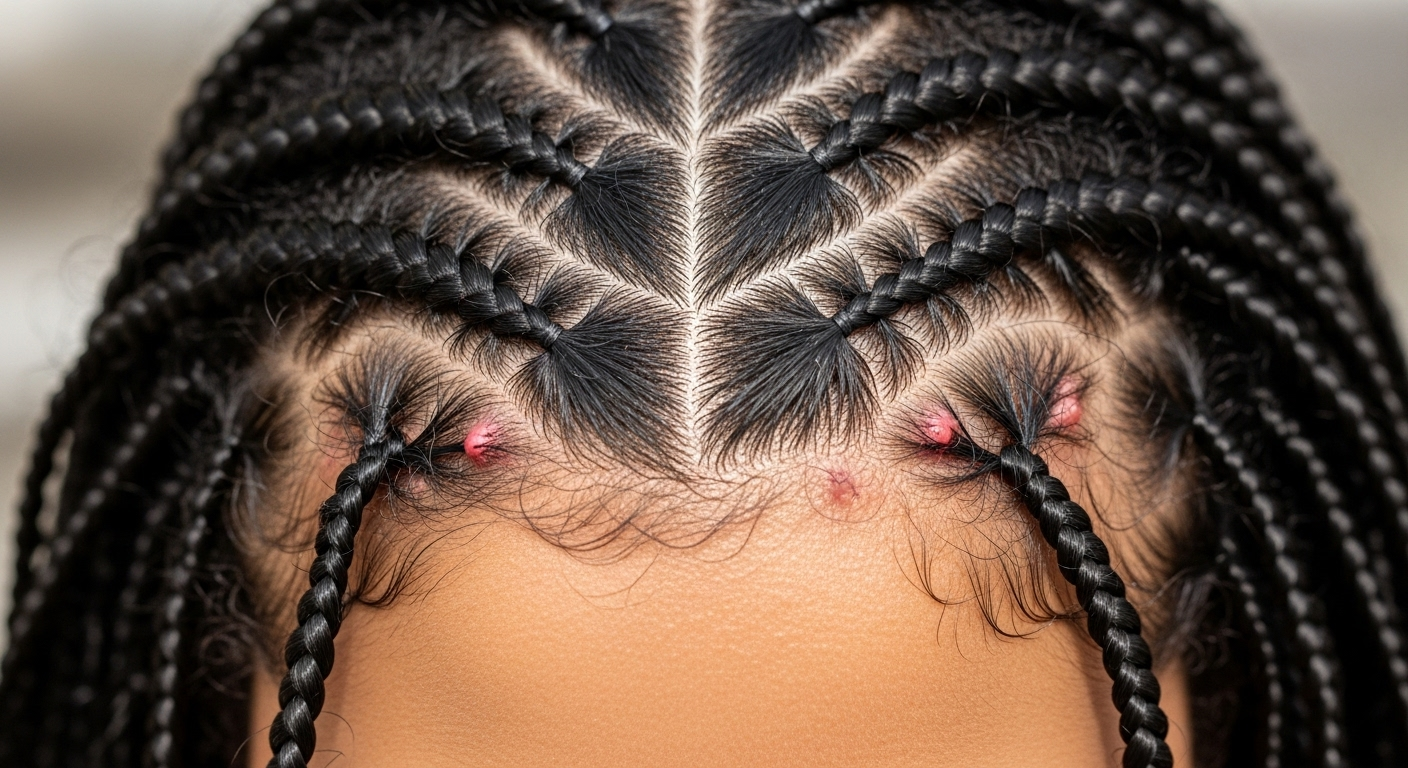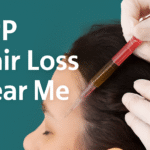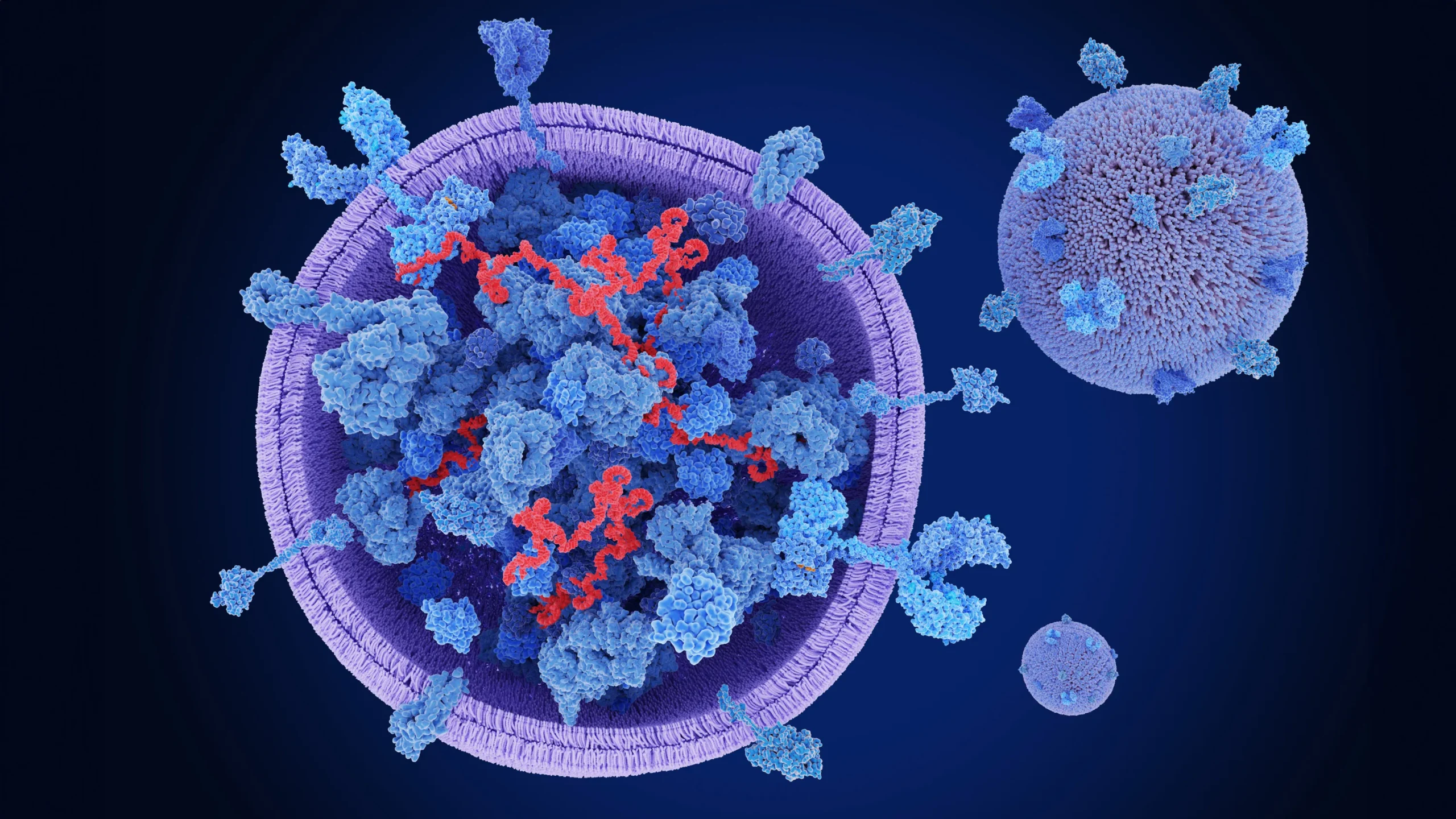Are your favorite braided hairstyles doing more harm than good? Braids and hair loss are often linked, especially when styles are too tight, worn too long, or poorly maintained. This article explores the connection between braiding and hair damage, how to prevent it, and what to do if you notice thinning or shedding. From expert …
Are your favorite braided hairstyles doing more harm than good? Braids and hair loss are often linked, especially when styles are too tight, worn too long, or poorly maintained.
This article explores the connection between braiding and hair damage, how to prevent it, and what to do if you notice thinning or shedding. From expert advice to real-life tips, discover how to enjoy braids without sacrificing hair health.
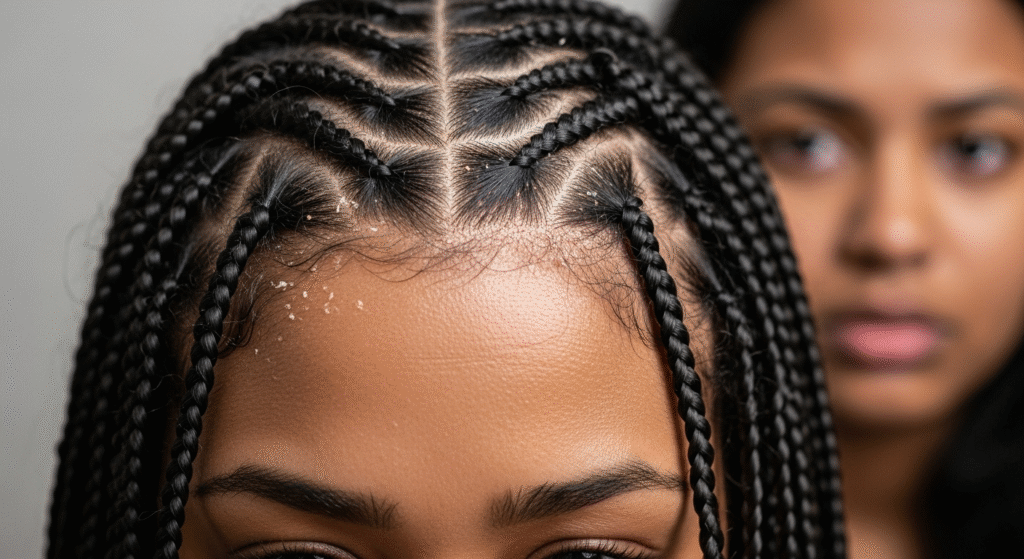
Why Braids and Hair Loss Are Connected
Understanding Traction Alopecia From Braids
One of the main causes of braids and hair loss is a condition called traction alopecia. It occurs when consistent tension pulls on hair follicles, eventually weakening and damaging them. Traction alopecia is common in people who frequently wear tight hairstyles, especially braids that stress the hairline or scalp over long periods.
According to dermatologists, repeated pulling can cause inflammation around the follicle and lead to permanent damage if not addressed early.
How Tension from Braids Damages the Scalp and Hair
Excessive tightness in braids can lead to:
- Follicle inflammation and scarring
- Restricted blood flow to the scalp
- Breakage and miniaturization of hair strands
Over time, this can result in receding hairlines, thinning edges, or even bald patches, especially in areas exposed to the most tension (e.g., the temples and nape).
Common Patterns of Hair Loss from Braiding Styles
The most noticeable hair loss usually occurs along:
- The frontal hairline
- Behind the ears
- The crown area (for high-tension updos)
Recognizing early signs of stress in these zones can help prevent long-term damage.
Braid Styles That Often Lead to Hair Loss
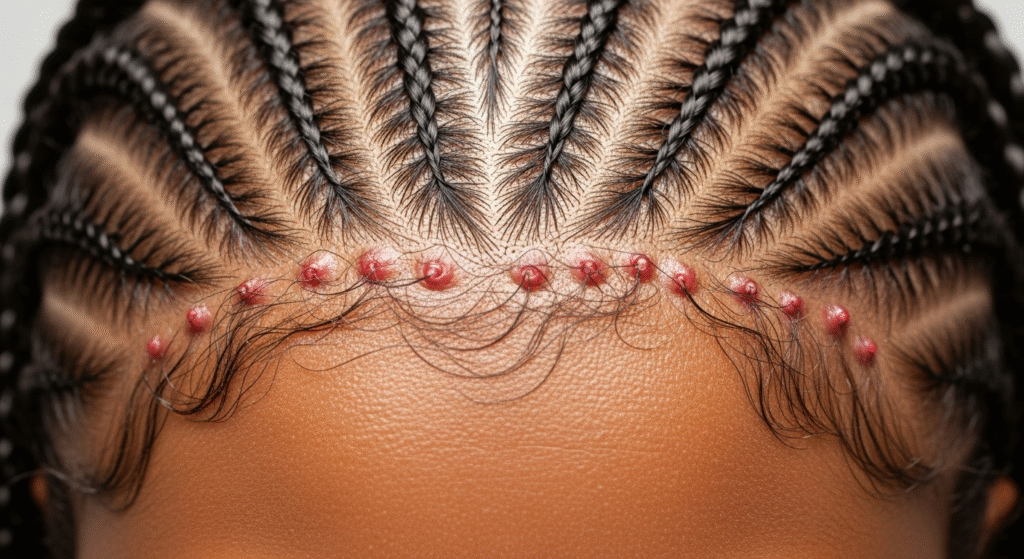
Tight Cornrows, Box Braids and Micro-Braids: High-Risk Styles
Some of the most popular braided hairstyles are also the riskiest when it comes to braids and hair loss, including:
- Tight cornrows
- Box braids (especially when done with added hair)
- Micro-braids
These styles, while beautiful and versatile, often pull tightly on the scalp, especially around delicate edges. When left in too long or worn repeatedly, they contribute significantly to traction alopecia.
Heavy Extensions and Long Braids
Adding synthetic or human hair extensions increases the weight pulling on your natural hair. The longer or heavier the braid, the more strain it places on the root, especially when wet. Over time, this can accelerate shedding and scalp soreness.
Knotless Braids: A Safer Alternative
According to dermatologists at Baylor College of Medicine, knotless braids offer a gentler approach. They start with your natural hair and gradually incorporate extension hair, placing less strain on the root. If you’re worried about braids and hair loss, switching to knotless styles may reduce your risk.
Signs You’re Experiencing Hair Loss from Braids
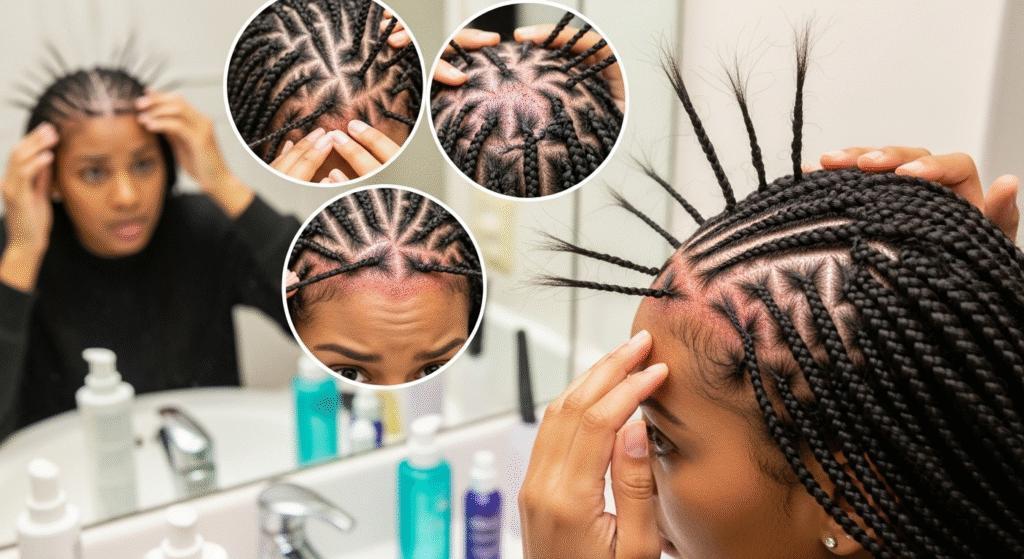
Edge Thinning and Hairline Recession
One of the first signs of trouble is thinning edges — especially around the forehead and temples. If you notice your baby hairs disappearing or your braid lines looking sparse, it may be time to take a break from tight styles.
Scalp Tenderness, Redness, or Bumps
A sore, itchy, or inflamed scalp is another warning sign. Constant discomfort or visible bumps along braid parts indicate too much tension and potential follicle stress.
Excessive Hair Shedding After Braid Removal
While it’s normal to lose 50–100 hairs a day, pulling out large clumps or noticing bald spots after braid removal could point to braid-induced hair loss.
Preventing Hair Loss from Braids Safely and Effectively
Prep Tips: Clean, Condition and Detangle Before Braiding
Prepping your hair properly can prevent damage:
- Cleanse your scalp before installation
- Use a deep conditioner to hydrate and strengthen hair
- Detangle thoroughly to avoid pulling during braiding
Healthy hair resists tension better.
Choose Loose, Lightweight Styles
Opt for:
- Loose braids around the hairline
- Lightweight synthetic extensions
- Styles that distribute tension evenly
Tension-free styles are key in breaking the cycle of braids and hair loss.
Limit Duration –Follow the 4–6 Week Rule
Don’t leave braids in for more than 6 weeks. Prolonged wear leads to:
- Matting
- Build-up
- Weak roots
- Increased breakage during removal
Schedule breaks between installations for recovery.
Scalp Care: Moisturize, Massage and Cleanse
Maintaining scalp health during protective styling is essential:
- Apply light oils (e.g., jojoba, peppermint) weekly
- Gently massage the scalp to stimulate circulation
- Cleanse with diluted shampoo or scalp sprays every 1–2 weeks
Expert Tips on Braids and Hair Loss Prevention
Trichologist Advice on Moisture and Protein Balance
According to trichologists, lack of moisture and protein imbalance in braided hair contributes to breakage. Follow a routine that includes:
- Leave-in moisturizers
- Protein treatments between braid sets
- Hydration sprays (especially in dry climates)
When to Seek Professional Help for Braid-Induced Hair Loss
Early Warning Signs of Permanent Damage
If you observe:
- Patchy bald spots
- Scalp discoloration or scarring
- No regrowth for 2–3 months
You may be experiencing irreversible damage. Early intervention is critical.
Hair Loss Treatments: Topicals, Injections, and Supplements
Your dermatologist may suggest:
- Topical minoxidil (Rogaine)
- Steroid creams or injections to reduce inflammation
- Biotin, zinc, or vitamin D supplements to promote regrowth
Advanced Options: CCCA Management or Hair Transplant
For advanced braid-related hair loss, especially Central Centrifugal Cicatricial Alopecia (CCCA):
Final Thoughts: Healthy Braiding for Healthy Hair
Braids and hair loss don’t have to go hand in hand. By choosing tension-free styles, following scalp care routines, and recognizing early signs of damage, you can enjoy the beauty of braids without compromising your hair health.
Protective styles should protect — not harm.
FAQs About Braids and Hair Loss
Q1: Do braids and hair loss always go together?
Not always. When done properly, braids can be protective. It’s all about technique, tension, and care.
Q2: Are box braids bad for hair?
Not inherently. But tight installation, heavy extensions, or long wear times can contribute to hair loss.
Q3: Are knotless braids safe for sensitive scalps?
Yes. They reduce root tension and are gentler on the scalp, making them ideal for those with hair loss concerns.
Q4: How long is too long to keep braids in?
Anything beyond 6–8 weeks increases your risk of breakage, matting, and scalp irritation.
Q5: Can braids prevent breakage?
Yes — if they’re loose, well-maintained, and part of a healthy routine.
Book a Hair Consultation Today
If you’re struggling with braids and hair loss, don’t wait for the damage to worsen.
Book a consultation with Dr. Uzma Irfan, an ISHRS-certified surgeon in Islamabad today for a personalized hair restoration plan.

